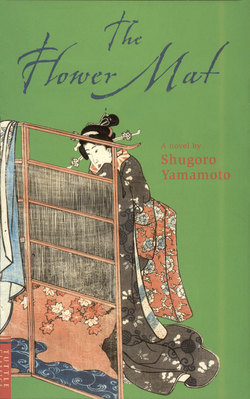Flower Mat

Реклама. ООО «ЛитРес», ИНН: 7719571260.
Оглавление
Shugoro Yamamoto. Flower Mat
Table of Contents
Introduction
Prologue
Part One 1
2
3
4
5
Part Two 6
7
8
9
Part Three 10
11
12
13
14
Part Four. 15
16
17
18
19
Epilogue
Отрывок из книги
Shugoro Yamamoto (1903-67), born Satomu Shimizu in Yamanashi Prefecture, adopted his new name in gratitude for the kindnesses shown him by the Yamamoto family with whom he lived during his school days in Yokohama. Critical recognition followed the publication of his first novel, Suma-dera Fukin (Around the Suma Temple), in 1926. Among his nineteen other novels, Nihon Fudoki (Japanese Women's Lives, 1944), Mominoki ivas Nokotta (A Fir Tree, 1958), and Aobeka (1961) were singled out for special awards, all of which Yamamoto declined. Hanamushiro (The Flower Mat, 1948) represents well Yamamoto's belief that the historical novel should not be a mere chronicle of events but a study of the impact of those events on an ordinary human being. This common touch, plus the sorrow and lyricism of his historical novels, have attracted a wide readership among Japanese and have allowed Western readers to share a very Japanese view of life. The Flower Mat was very popular in the original Japanese and was the basis of a successful television drama.
Shugoro Yamamoto (1903-1967) was a man of our century. To read his novel, The Flower Mat , however, is to be plunged back into a time when East and West were indeed two completely different worlds. In the West it was the decade of the 1760s. In Japan, where the events related in the novel take place, it was approximately the 165th year of the Tokugawa period, very early in the seven-year reign of the Empress Go-Sakuramachi at the imperial capital of Kyoto.
.....
"What are you going to use it for?" she would ask. "If you need more, I can give it to you in a lump sum".
"Well, this is enough for now. Pocket money has a certain fascination when I get it bit by bit."
.....